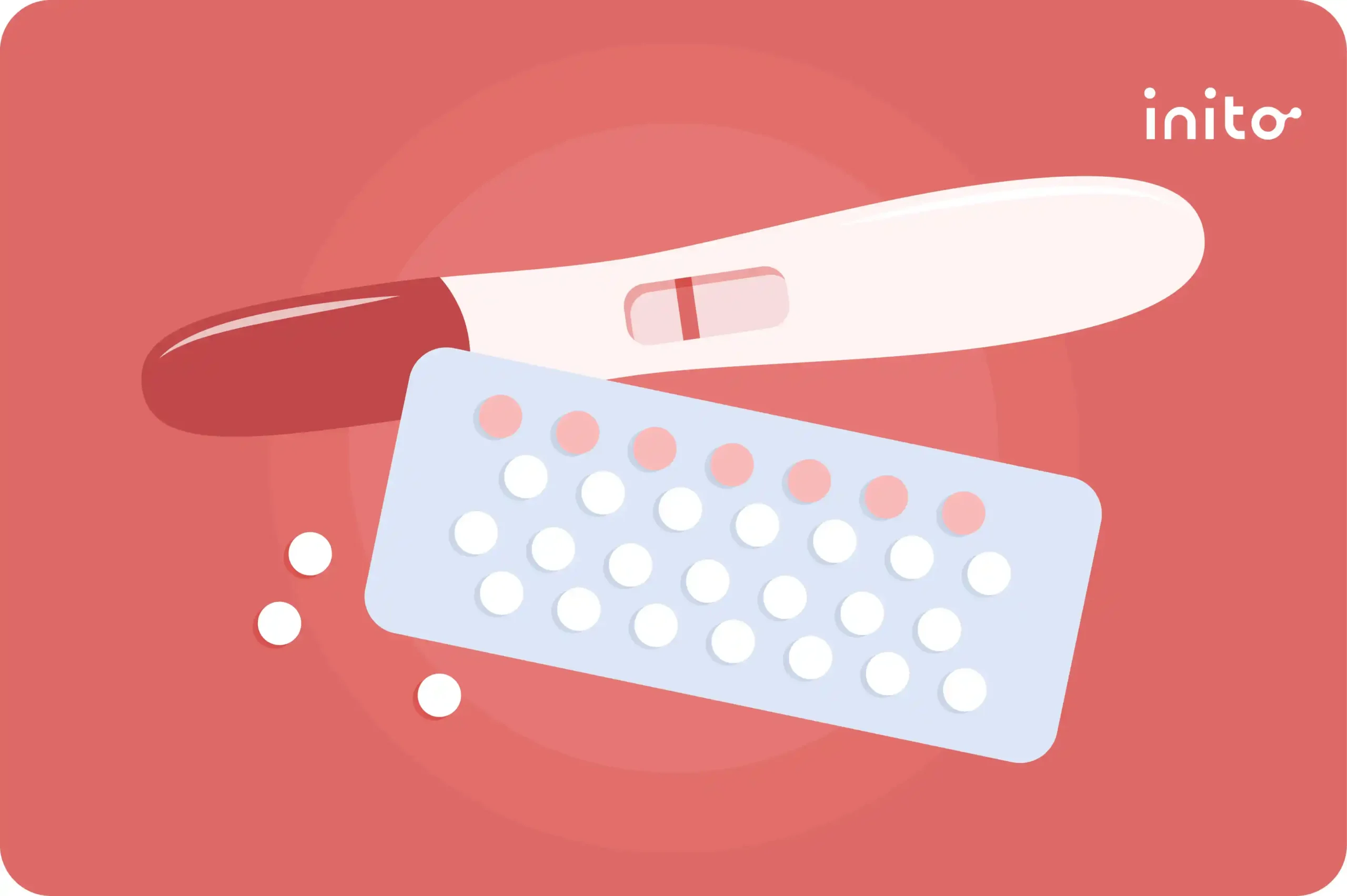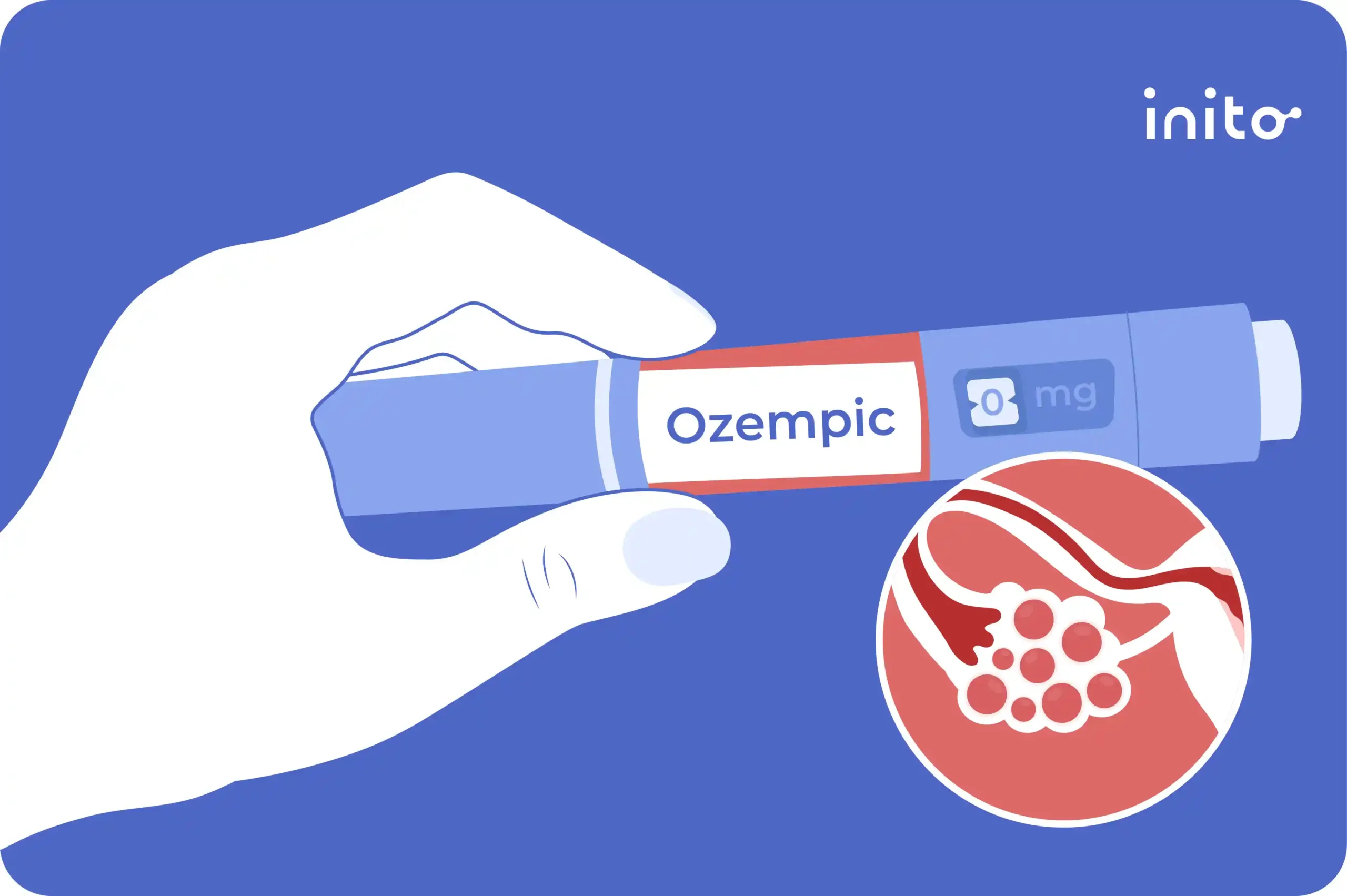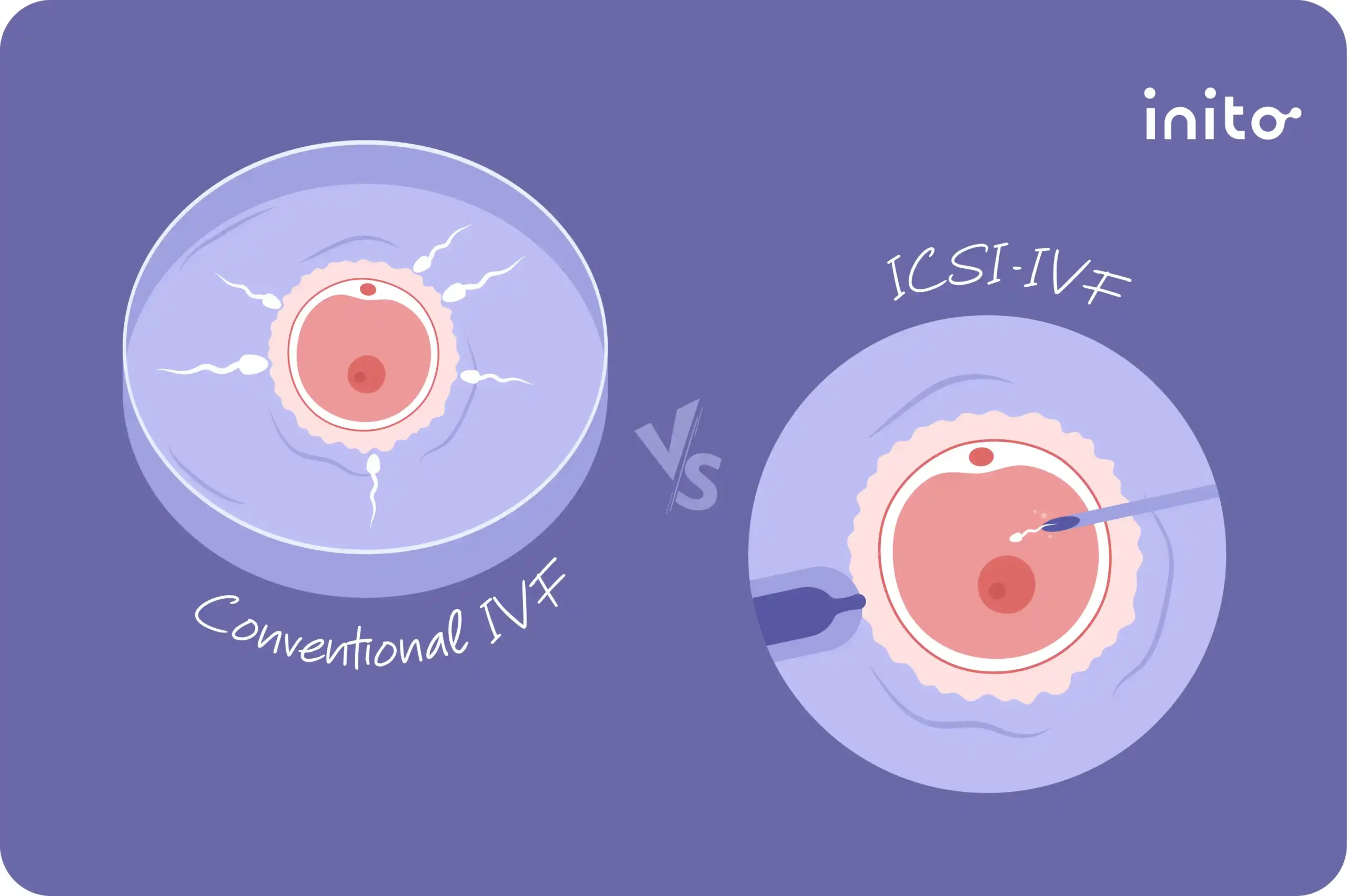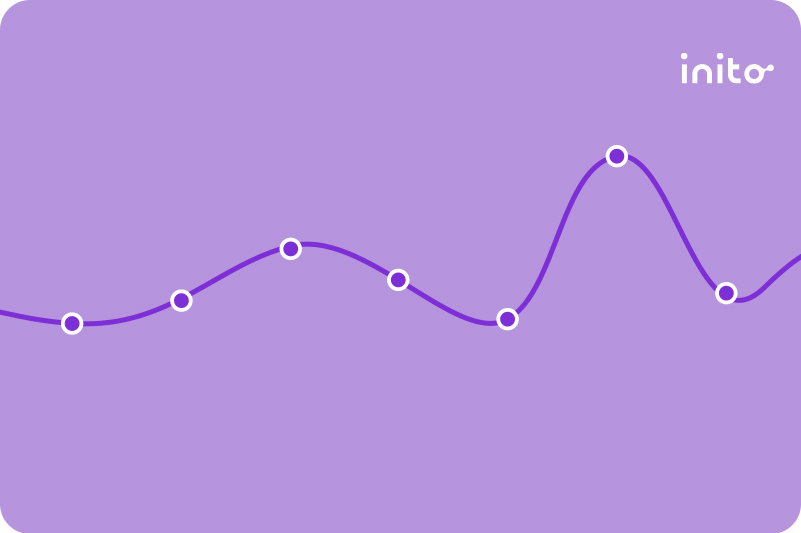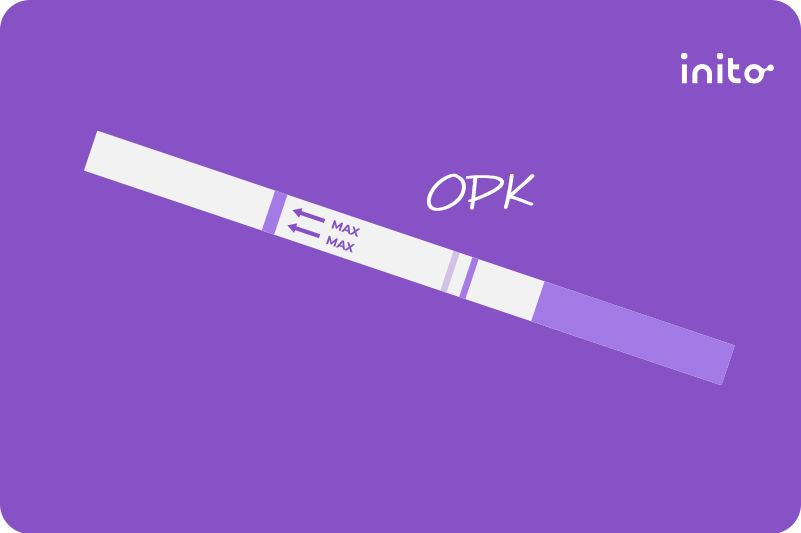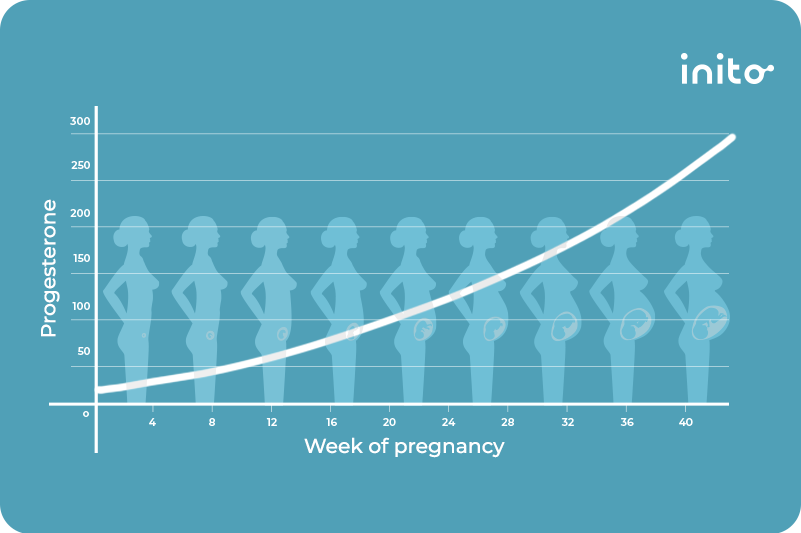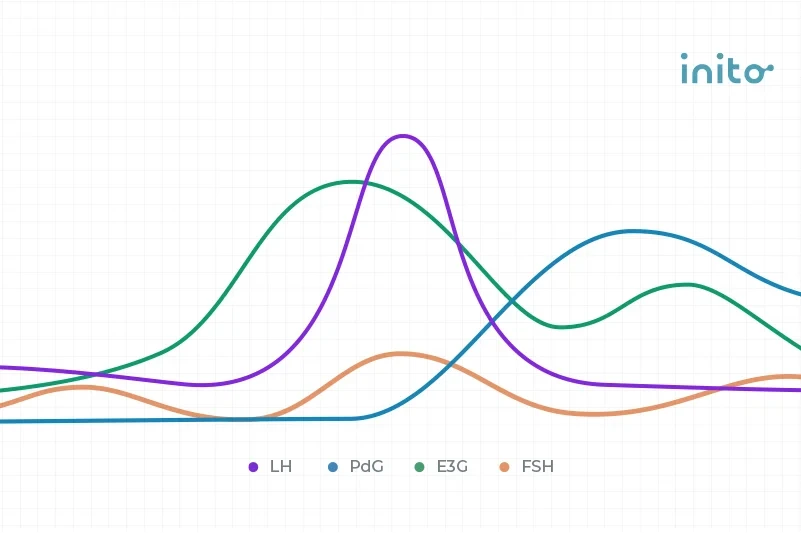Content table
Wondering what your DPO symptoms (or lack of symptoms) could mean during the two week wait?
When you’re trying to get pregnant, the two weeks after ovulation can feel a bit overwhelming. That’s why we put together this complete breakdown of all the symptoms you may notice from 1 DPO to 12 DPO.
Keep reading to feel more confident about what to expect post-ovulation.
What is DPO in pregnancy?
DPO stands for “days past ovulation.” And this simply means how many days have gone by since you ovulated.
Let’s say you ovulate on April 13th. The next day, April 14th would be 1 day past ovulation, or 1 DPO. Then April 15th would be 2 DPO. April 16th would be 3 DPO and so on.
And as a reminder, ovulation typically happens about 24 to 36 hours after you have your LH surge.
For some women, this can be challenging to track. So let’s get a better understanding of how to tell when you ovulated.
How do you know how many DPO you are?
To determine your DPO, identify which day in your cycle you ovulated. Then backtrack and count how many days it’s been since ovulation. That’s your DPO number. But how do you determine exactly when you ovulated?
One option is using a cycle-tracking app that allows you to track your menstruation and symptoms each month. Another route is using ovulation predictor kits (OPKs). But a lot of fertility apps and OPKs only help you estimate when you will ovulate. They don’t actually confirm that you ovulated. Frustrating, right?
That’s why we suggest a third route: using a more comprehensive fertility monitor. For example, the Inito monitor allows you to measure four fertility hormones – LH, estrogen, and FSH to track your fertile window, and PdG (urine metabolite of progesterone) to confirm ovulation, all on a single test strip.
Since progesterone rises after ovulation, tracking your PdG levels will tell you for sure if and when you ovulated. This is a total game-changer for so many women!
Now that you know how to calculate your DPO, let’s get into what you can expect from 1 DPO through 12 DPO symptom-wise.
Symptoms by DPO: What’s going on in your body?
| # of DPO | What’s going on if you DID conceive… | What you’ll notice |
| 1 – 5 | Ovulation has just occurred and the fertilization process has begun. | Basal body temperature will increase. You’ll also have thicker cervical mucus because of rising progesterone. |
| 6 – 10 | Progesterone continues rising. And implantation will most likely occur between 8-10 DPO. | Higher progesterone may cause you to feel fatigue, bloating, tender breasts, and moodiness. You could also have implantation spotting or bleeding. |
| 10+ | The embryo implants no later than 12 DPO. And the placenta will start forming and begin taking over progesterone production. hCG levels will also rise, just about doubling every two days. | Higher levels of progesterone and hCG may cause fatigue, bloating, nausea, food cravings, higher sensitivity to smell, an increased urge to pee, and back achiness. |
1 DPO to 5 DPO (preimplantation)
In the very beginning of the two-week wait (days 1 to 5), there are two main possibilities.
The first possibility is that fertilization did happen. In this case, the fertilized egg is still journeying through your fallopian tube to your uterus. Your uterus is where the magic of implantation will soon happen (around 6 – 12 DPO).
The other possibility is that the egg did not get fertilized by the sperm. An egg can only survive about 24 hours after ovulation. So if the sperm didn’t meet and join with the egg at that point, conception won’t occur. When an egg is not fertilized, it will get reabsorbed into your uterine lining (which then sheds when you get your period).
What are 5 DPO symptoms?
Whether you conceived or not, hormonal changes from 1 – 5 DPO can cause symptoms. When your progesterone levels rise, there are many physical and emotional symptoms you may experience. Feeling moody or more tired than normal are possible, as are bloating, breast soreness, and abdominal discomfort (more on this later).
Is a pregnancy test at 5 DPO reliable?
Since implantation won’t have happened yet, 1 DPO – 5 DPO is too early to test for pregnancy. Regardless of whether or not the egg was fertilized, you will get a negative pregnancy test.
6 DPO to 8 DPO
6 DPO to 12 DPO is an exciting time–it’s when the fertilized egg is busy attaching to the uterine lining (aka implantation window). 6 DPO is the earliest that the embryo can implant to make the pregnancy official!
But before we get ahead of ourselves, know that it’s also possible (and pretty likely) that implantation won’t happen right at 6 DPO. The fertilized egg is probably still traveling to your uterus.
A lot is also going on with your hormones between day 6 and day 8 post ovulation too. Progesterone will reach peak levels from 6 – 8 DPO. And if the embryo implants in this time frame, your levels of human chorionic gonadotropin (hCG) will also start rising.
Increased amounts of both of these hormones can cause you to experience symptoms. But remember, your progesterone rises either way. So it’s nearly impossible to tell if your 6 to 8 DPO symptoms are from early pregnancy or not.
Is a pregnancy test at 6 to 8 DPO reliable?
Even if implantation already occurred, testing at 8 DPO is still not that reliable yet. This is because the pregnancy hormone, hCG, takes time to reach a detectable level. So you could get a negative result at this time but actually be pregnant or almost pregnant. For the most accurate test result, take a pregnancy test again after your missed period.
8 DPO to 10 DPO
The majority of pregnancies have implantation occur between 8 to 10 DPO (84% to be exact). So at this time, if implantation occurs, your progesterone levels will keep climbing. If implantation doesn’t occur, progesterone levels will start to go back down.
Is a pregnancy test at 8 to 10 DPO reliable?
A home pregnancy test from 8 – 10 DPO is a little more reliable than at 6 – 8 DPO. But it’s still not super reliable overall. Let’s talk about the possibilities.
If you do get a positive on or before 10 DPO, it’s time to celebrate—you’re pregnant! If you don’t get a positive, you could still be pregnant. This is the case if the embryo hasn’t finished implanting yet. Or if implantation has happened but hCG levels are too low for the test to detect.
So if you test negative at this time, test again when the date of your expected period passes.
10 DPO to 12 DPO
Implantation can still occur in this window, but it’s considered late implantation. According to some studies, implantation after 10 DPO may come with a higher risk of miscarriage. That may sound scary, but try not to worry too much about this because there’s no way to tell the exact DPO at which implantation occurred.
At 10 to 12 DPO, any symptoms you experience are either from your progesterone levels or your hCG levels (if pregnant).
Is a pregnancy test at 10 to 12 DPO reliable?
A positive home pregnancy test at 10 DPO, 11 DPO, or 12 DPO is reliable. So if you saw those two lines, a YES, or a smiley face, congrats on your pregnancy!
A negative test may still not be so reliable though. Yes, it’s possible that you can get a true negative. But you could also get a false negative. And this is for the same reasons we already discussed.
Either implantation didn’t occur yet. Or it’s still too early and hCG levels aren’t high enough to register on a test yet. To get the most accurate test results, test again after your missed period.
Still want to know more about specific symptoms and what they could mean? Take a look at the next section!
Common symptoms during the two week wait
| I’m noticing… | Reason for symptom | Pregnancy or PMS symptom? |
| Implantation bleeding | When the embryo implants, it connects to your circulation (aka its life source). This can cause light bleeding. | Pregnancy |
| Fatigue | Rising progesterone can make you feel more tired. | Either |
| Abdominal cramps or discomfort | Both implantation and rising progesterone can cause cramping. | Either |
| Moodiness | Rising hormone levels (progesterone and hCG) can both cause irritability. | Either |
| Breast tenderness | When progesterone rises, you have more blood flow to your breasts. | Either |
| Increased urination | Higher levels of progesterone increase how frequently your bladder contracts. | Either |
| Constipation and bloating | Digestion slows down when progesterone levels rise. | Either |
| Backache | Progesterone levels cause your ligaments to loosen up which can lead to aches. | Either |
| Cervical mucus | Decreasing estrogen levels before your period can cause you to have less discharge that is sticky and clumpy. Or changes to the vaginal wall in early pregnancy can cause you to have more discharge that is whitish in color. | Either |
12 DPO and beyond: what you may notice
Once you pass 12 DPO, the window for implantation has ended. If you’re not pregnant, you will get your period soon. And if implantation was successful, your hCG levels will just about double every two days through the first 7 weeks of pregnancy.
When your hCG levels begin rising at this time, you may experience:
- Fatigue
- Intense moodiness
- Darkening areolas
- Morning sickness (nausea and/or vomiting at any time of day)
- Any of the symptoms already listed in the previous section and table
But what if you’ve already passed 12 DPO and don’t notice anything out of the ordinary? Keep reading!
Can I be pregnant and not have any symptoms?
Yes! It is entirely possible to be in the early stages of pregnancy and have no noticeable signs. This is because symptoms vary woman to woman. And every woman responds differently to hormone changes.
In one study, researchers found that at 20 DPO, only 50% of pregnant women experienced pregnancy symptoms. Even by the 8th week of pregnancy, 11% of the women who were pregnant still didn’t report any symptoms.
So again, it’s completely normal to want to be in tune with your body and be on the lookout for changes. But don’t let yourself lose hope if you don’t notice any obvious pregnancy signs.
Know more: When to Take a Pregnancy Test After Implantation
At how many DPO should I take a pregnancy test?
Still wondering: How many DPO will test positive? We know it can feel like an eternity when you just want to know one way or the other.
But use the chart below to determine when you should start testing for pregnancy.
How many DPO are you? | Should you take a pregnancy test yet? |
1-5 DPO | It’s not advised to test yet. Pregnancy only starts after implantation, and implantation doesn’t happen until at least 6 DPO. |
6-8 DPO | It’s still best to avoid testing yet. This is the very beginning of the implantation window. So hCG will need more time to double and show up in your urine. |
8-10 DPO | We know it’s so tempting to test but wait just a little longer if you can. This is when most women experience implantation. So for most women, hCG levels still won’t be detectable yet. |
10-12 DPO | At 12 DPO, which is likely the first day of your missed period, you can test. 99% of pregnancy tests should give you an accurate result if the date of your expected period has passed. Of course, this is assuming you tested according to the instructions and knew your DPO or the exact date of your last menstrual period (LMP). |
As you can see, you’ll get the most accurate results when you test after your expected period doesn’t show. This is usually 12 or more days after ovulation. Waiting until this window allows your body to produce a detectable amount of hCG.
That said, if you really can’t wait that long (hey, no judgment here), there’s a small chance you’ll get a BFP (big fat positive). There have been some women in the Inito Facebook group who’ve seen positives at 9, 10, and 11 DPO. But it all depends on each woman and how quickly their hCG rises.
If you test around 12 DPO and see a negative, retest again a week later. This will give hCG time to double every 2 days until it reaches an amount that a pregnancy test can pick up.
On occasion, it is normal to have a period that comes a few days late. But what if you’re testing a week later and still getting negatives with no period? It’s time to reach out to your doctor.
Know more: Negative Pregnancy Test But Still Not Getting My Period
If you test after your missed period (12 days past ovulation or later) and get a positive result? Yay, you’re pregnant! Feel free to test again in another two days just to confirm. But you can call your doctor to schedule your first pregnancy appointment.
Can I be pregnant but test negative?
Depending on how early you test, yes! You could be pregnant but get a negative test result. In very early pregnancy, even though your body is pumping out hCG, it’s a small amount.
Here are some numbers to put this in perspective for you!
Around 9 – 10 DPO, average urine hCG levels are less than 1 mIU/mL. But for hCG to show up on most pregnancy tests, it needs to reach almost 25 mIU/mL. This is why testing too early increases your chances of getting a false negative. So if you think you tested too early, wait another week and then retest!
Know more: hCG Doubling in Pregnancy: Why It Matters
Takeaways
- If you’re pregnant, the embryo will implant between 6 DPO and 12 DPO. But the most common range is actually 8 DPO to 10 DPO.
- After you ovulate, your progesterone levels will rise. And the pregnancy hormone hCG will also start increasing after implantation is successful. These two rising hormones are the reason you may notice common symptoms like mood swings or breast pain.
- If you notice very light bleeding or spotting a few days before your period, this is likely implantation bleeding. And it could be a sign that you’re pregnant. (Although, the majority of women won’t have this symptom).
- Changing hormone levels affects each person differently. This is why some pregnant women notice symptoms much earlier than others.
- A helpful way to recognize anything unusual is to track your symptoms each menstrual cycle. The Inito app is a great tool for this.
- Testing from 6 DPO to 8 DPO is too early to get a positive result. This is because human chorionic gonadotropin needs more time to rise to at least 20 – 25 mIU/mL.
- Testing after you miss your period (12-14 days post ovulation or later) is your best bet for accurate results.
- If you test before this, wait another week (or at least until you miss your period) before testing again.
Was this article helpful?
- Time of Implantation of the Conceptus and Loss of Pregnancy | New England Journal of Medicine
- Progesterone Blood Level – an overview | ScienceDirect Topics
- Bleeding During Pregnancy | ACOG
- Chorionic Gonadotropin Beta Subunit – an overview | ScienceDirect Topics
- A prospective study of the onset of symptoms of pregnancy – Journal of Clinical Epidemiology
- Pregnancy | FDA
- Strips of Hope: Accuracy of Home Pregnancy Tests and New Developments – PMC
- When can I expect a positive HPT if I am pregnant?






